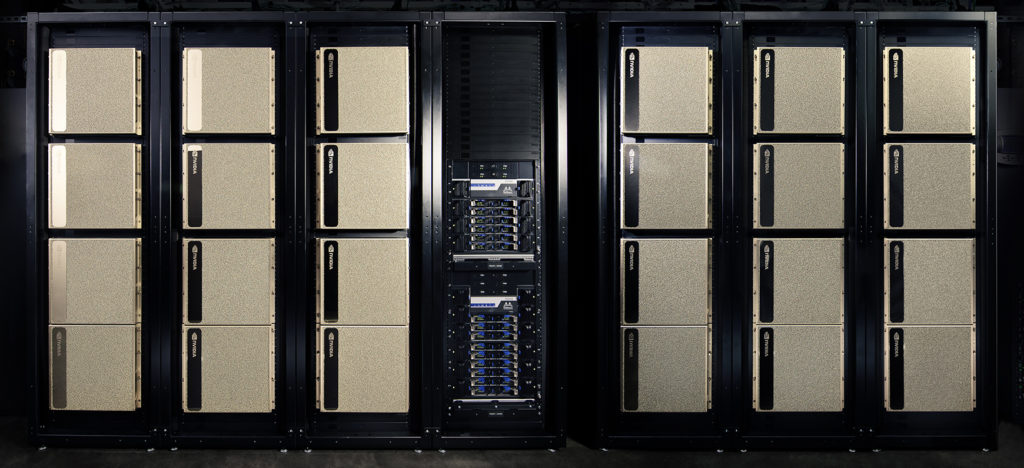Computing technology developer Nvidia has built the world’s 22nd fastest supercomputer – DGX SuperPOD – to provide the AI infrastructure needed to meet the demands of the company’s autonomous vehicle deployment program.
DGX SuperPOD was built in just three weeks using 96 Nvidia DGX-2H supercomputers and Mellanox interconnect technology. Delivering 9.4 petaflops of processing capability, it has the power needed for training the vast number of deep neural networks required for safe self-driving vehicles.
A single data-collection vehicle generates 1TB of data per hour. Multiply that by years of driving over an entire fleet, and you quickly get to petabytes of data. That data is used to train algorithms on the rules of the road — and to find potential failures in the deep neural networks operating in the vehicle, which are then re-trained in a continuous loop.
“Few AI challenges are as demanding as training autonomous vehicles, which requires retraining neural networks tens of thousands of times to meet extreme accuracy needs,” said Clement Farabet, vice president of AI infrastructure at Nvidia. “There’s no substitute for massive processing capability like that of the DGX SuperPOD.”
Powered by 1,536 Nvidia V100 Tensor Core GPUs interconnected with Nvidia NVSwitch and Mellanox network fabric, the DGX SuperPOD hardware and software platform takes less than two minutes to train ResNet-50. When this AI model came out in 2015, it took 25 days to train on the then state-of-the-art system, a single Nvidia K80 GPU. DGX SuperPOD delivers results that are 18,000 times faster.
While other TOP500 systems with similar performance levels are built from thousands of servers, DGX SuperPOD takes a fraction of the space and is roughly 400 times smaller than its ranked neighbors.


